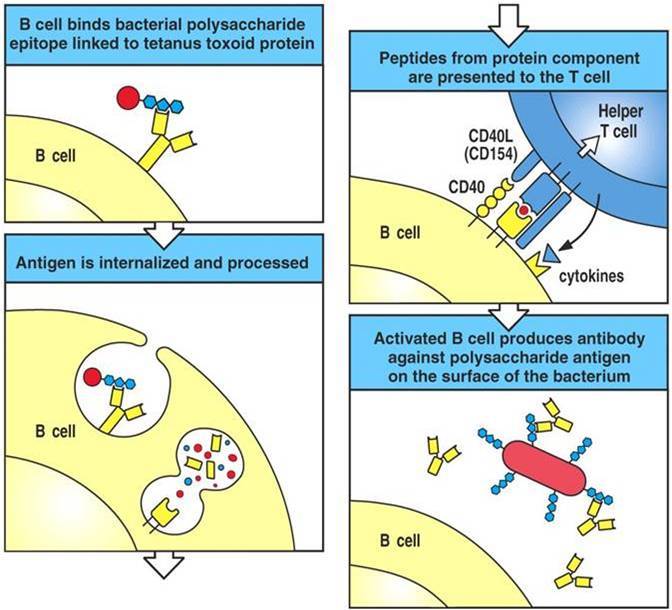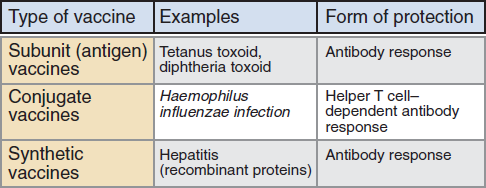FA16 Immunization Module’s Updates
Subunit, Conjugate, and Synthetic Vaccines
Subunit vaccines contain only the antigens or epitopes of antigens that are necessary to generate an immune response, rather than the entire microbe. These vaccines reduce the risk of adverse reactions that may result from using the whole microbe, and there is no risk that a microbe will replicate, mutate, or revert to a pathogenic form. However, subunit vaccines generate a weaker immune response, and use of an adjuvant and multiple doses are necessary. Subunit vaccines can be created by growing the microbe and extracting the antigens, or by synthesizing the antigens using recombinant DNA technology.
Conjugate vaccines are a type of subunit vaccine used for protection against bacteria encapsulated in a polysaccharide coating. Immature immune systems, such as in infants, are unable to recognize these encapsulated bacteria. Conjugate vaccines are composed of the polysaccharide bound to a carrier protein, which is recognized as an antigen when presented to T cells. Through linked recognition, B cells are able to recognize and produce antibody against that polysaccharide. As a result, the immature immune system will be able to generate an immune response to the encapsulated bacteria.
Synthetic vaccines contain synthetically-generated versions of antigens or epitopes of antigens. Like other subunit vaccines, synthetic vaccines eliminate the risk of a microbe replicating, mutating, or reverting to a pathogenic form. Synthetic vaccines can be created quickly and in large amounts, and can also be modified to increase stability and reduce adverse reactions. In order for a synthetic vaccine to be effective, the synthetic antigen must fold into the same 3-dimensional structure as the microbial antigen, which serves as a challenge when designing synthetic vaccines.
Examples of diseases prevented by subunit, conjugate, and synthetic vaccines are shown below:
References:
http://www.vaccines.gov/more_info/types/
http://vaccine-safety-training.org/subunit-vaccines.html
http://www.who.int/biologicals/vaccines/synthetic_peptide_vaccines/en/




This post does a good job at summarizing the differences among the vaccines. It was interesting to learn that synthetic vaccines can be made in such large quantities. So, I am curious to learn if synthetic vaccines probably has the lowest production costs when compared to the other two since synthetic vaccines can be made extensively.